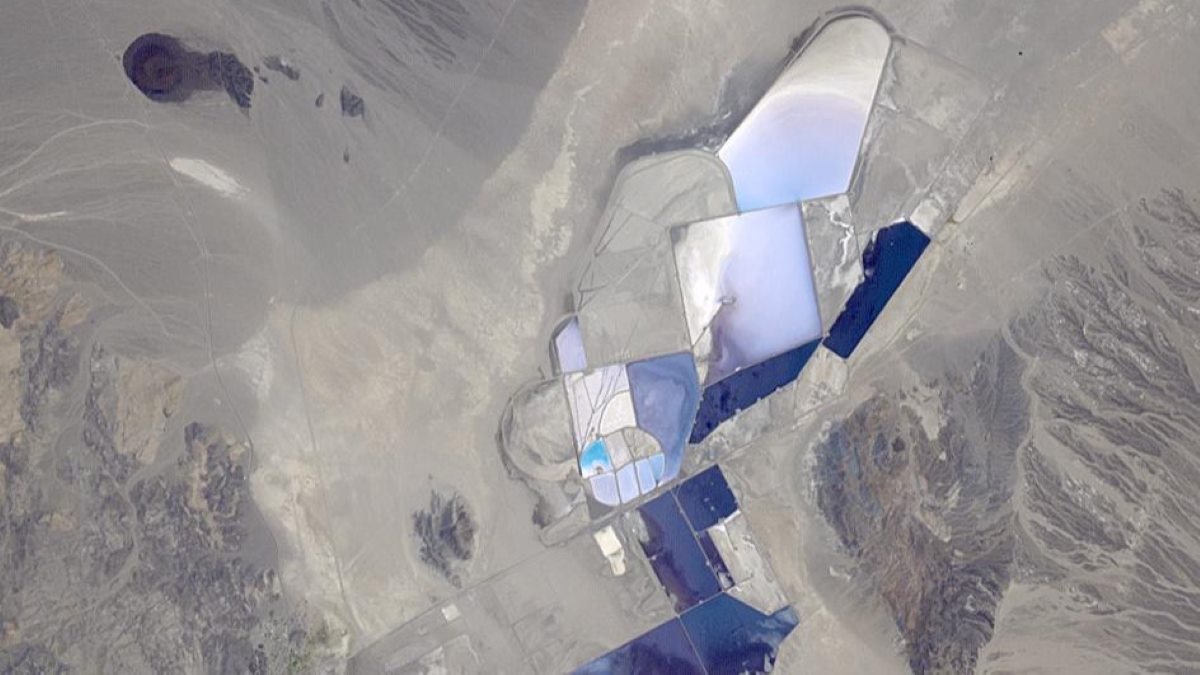Lithium mine in Silver Peak, Nevada, USA. Credit: NASA/METI/AIST/Japan Space Systems, and US/Japan ASTER Science Team
Engineers have demonstrated a cheaper and more environmentally friendly way to extract valuable resources such as lithium – a critical component of batteries and the green energy transition – from brine.
The team from the Australian National University developed the world’s first thermal desalination method in 2024.
Water remains in the liquid phase throughout a “thermodiffusion” process that uses temperature gradients to drive the migration of dissolved substances (solutes) from warmer to colder water.
The study shows the approach can also concentrate (or salinate) natural seawater and brine. It could be used to address a significant environmental issue associated with desalination – the production of vast amounts of brine.
“Desalination could be the key to solving the worldwide crisis of freshwater scarcity that continues to be exacerbated by climate change,” write the authors of the study published in the journal Nature Water.
“Currently, more than 20,000 desalination plants worldwide discharge about 130 million metric tonnes of brine per day. This brine discharge has a major adverse impact on natural resources, including water and soil.”
The industry is pursuing zero liquid discharge (ZLD), a multistep process in which brine is first concentrated and then crystallised. But this approach faces significant challenges.
Associate Professor Juan Felipe Torres, a mechanical and environmental engineer at ANU and Chief Investigator of the study, says the findings show the potential of thermodiffusion for concentrating brine with higher salinity.
“Existing technologies for desalination and brine concentration are well-established, but our thermodiffusion technology offers a promising alternative,” he says. “Current desalination technologies – where salt is filtered through a membrane – require large amounts of electric power and expensive materials that need to be serviced and maintained.”
Thermodiffusion does not require large amounts of electricity or costly membranes and other materials. The process requires only moderate heat (30–70°C) which can be generated from sunlight or as a waste product of machines like air conditioners and other industrial processes.
“Our thermodiffusive method has been successfully used for water desalination, while reducing energy costs and corrosion issues,” says Torres. “More recently, we have been able to apply the same method to manipulate the salinity of brine concentration solution without evaporating it, which also means that precious water isn’t wasted in the process.”
Briny solutions, such as seawater, salt lakes and ground water, are important sources of useful minerals like table salt (NaCl), magnesium, bromine, and calcium.
Top suppliers of lithium – Argentina, Chile and China – mainly recover the critical mineral from brine. Torres says their method could be used in the future to enhance this process.
“Our goal is to replace traditional evaporation ponds, a technology that is thousands of years old,” says Torres. “Instead of using vast amounts of land area and water resources, we can do the job with a much-reduced environmental footprint.”
ANU Research Fellow and study co-author, Dr Shuqi Xu, says the advantages of the thermodiffusion technology includes material-free and efficient separation of water from ions.
“Our research shows how our method is able to manipulate brine concentration for salt production without evaporation,” she says. “Future improvements could increase the flow rate and energy efficiency by at least 40 times.”
The team has co-founded Soret Technologies and have partnered with US company, Wacomet Water Co, to commercialise the technology.
“Our vision with Soret Technologies is to revolutionise brine concentration and desalination processes, making them more cost-effective through innovative thermodiffusion technology,” says Torres.
